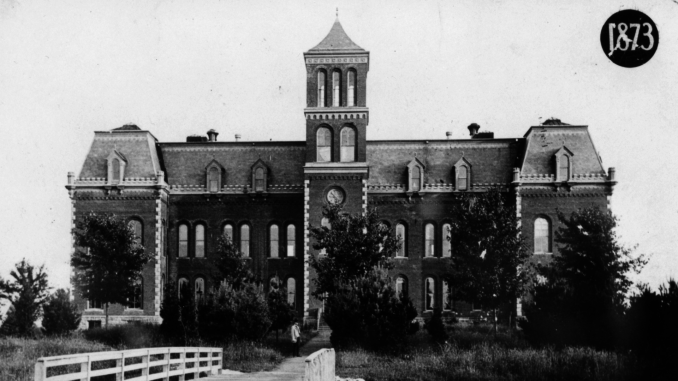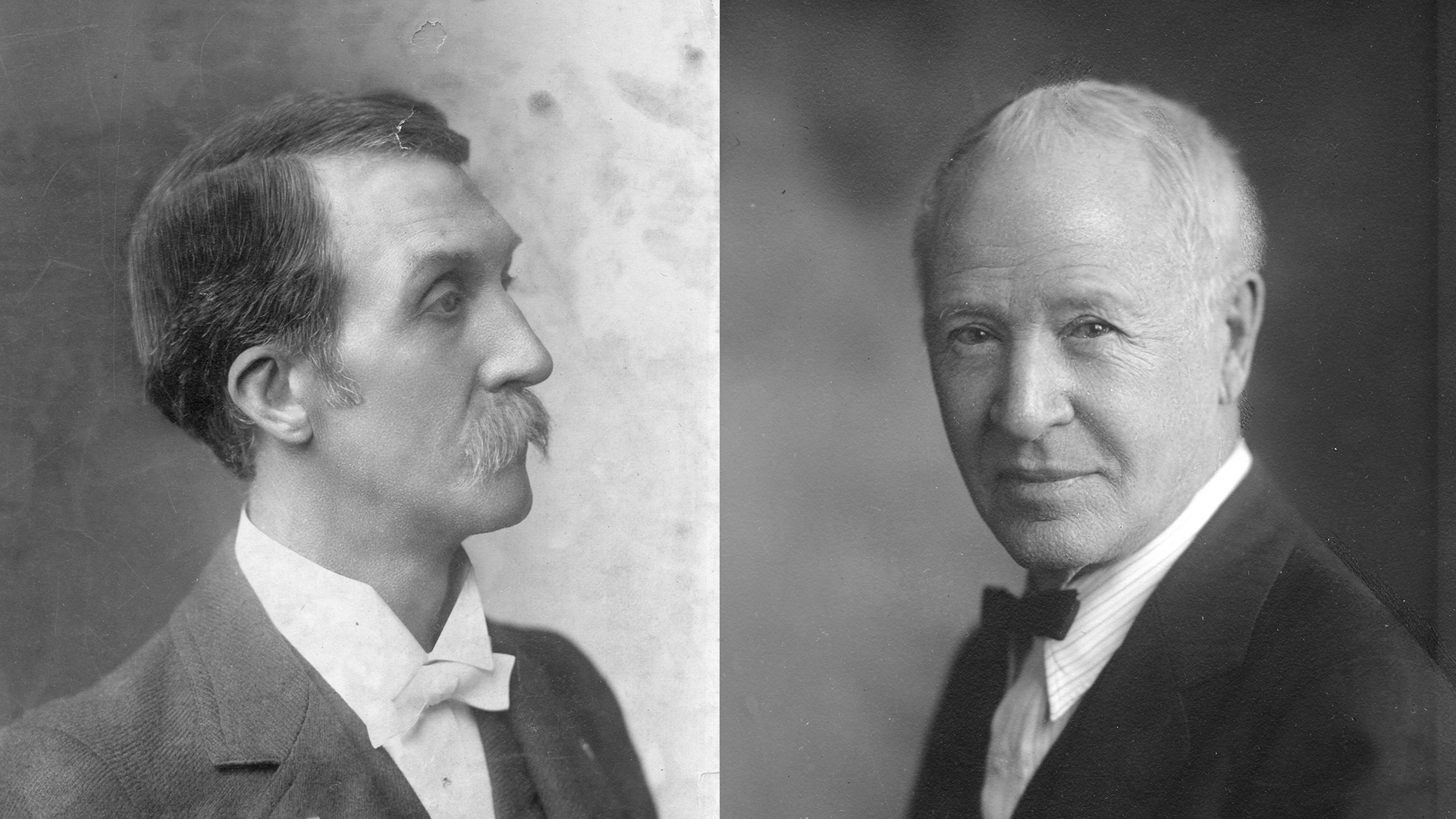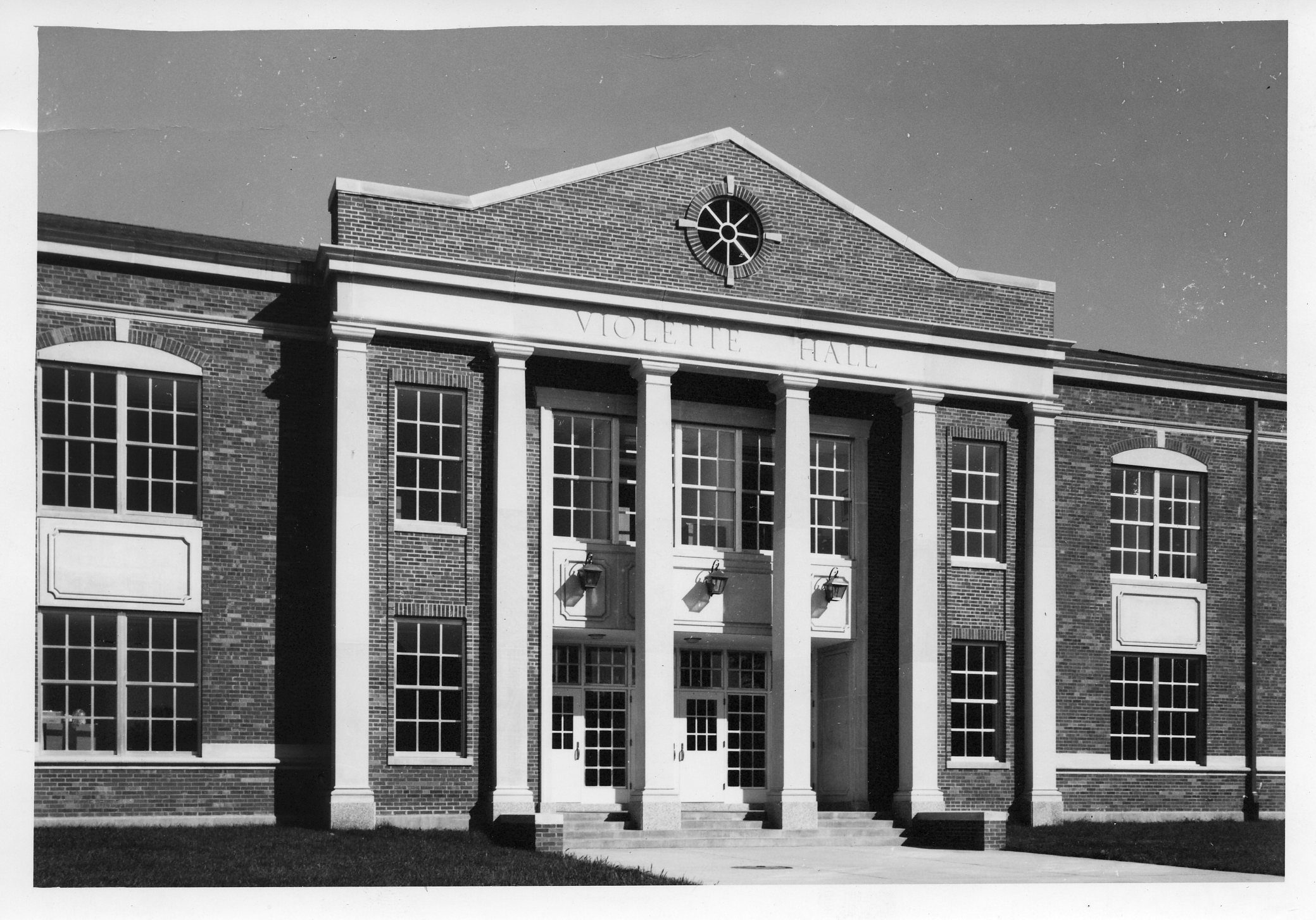
Imagine fighting for the creation of a college in a town that was established only 25 years previously. In 1867, James Baldwin started a journey to establish what is now Truman State University, and this year we will be remembering the trials and triumphs in University history.
Zachary Burden, the Missouri Hall Residence Life director, is known for his campus tours because he brings the University to life by sharing the history of buildings and campus. Burden said Truman’s history is vast and others should be invested in it, too.
Burden said he attended Truman before becoming a staff member, and he has been impressed by the University countless times. Burden said the most noticeable thing to him is the way students and alumni give back to the University to make it better for future generations.
“You don’t realize how many ways you’re benefitting from other’s gifts, but you do,” Burden said. “For example, the Student Union Building was paid for by the students. This is why I always tell students, especially seniors, that when you graduate you should give to the University. Even if it is only $5 a year until you get financially stable, you’re putting that money into the University for future students.”
Burden said students tend to give him a hard time about pouring more money into Truman, but he said he urges students to think about all the ways they have benefitted from the donations of others.
Burden said he has also seen a lot of physical change in the University, including renovations that have taken place in his time at Truman. He said he is impressed with the upkeep of the campus and has enjoyed seeing the buildings change in purpose and structure. Burden said when he attended Truman, Baldwin Hall was the fine arts building and now, years later, it has been completely renovated with a defined purpose with more and better classrooms.
A key part in the University’s history is the multiple name changes it has undergone throughout the years. Burden said from the outside looking in it looks like four separate universities, and in some ways it is, but there’s always been one underlying mission — to be a national leader.
“We went from a private teachers college to a public teachers college and then an all encompassing state college before landing as a liberal arts college,” Burden said. “We’ve changed a lot yet we have always wanted to be ahead of others.”
Burden said it took a lot for Truman to transition from being a private to public school, which is something a lot of people don’t realize. He said Baldwin realized that there was a greater need for a public teachers college, so he began to work with legislators to transition what was then The Normal Teachers College into a public school.
Burden said the University of Missouri fought hard against it and even edited the bill to place the school in another town. Burden said he believes this is a good story to illustrate how Truman and Kirksville share a strong bond because it was the community who went up to bat for Truman and ultimately got it approved to become a public school.
“Not only is Truman celebrating 150 years, but Kirksville is celebrating 175 years and ATSU is celebrating 125 years, and I think that says a lot about their shared destiny,” Burden said. “I think the three of us together have the ability to make northeast Missouri unique.”
Lanny Morley spent much of his life giving back to the University. Like Burden, Morley attended school at Truman and returned as a faculty member.
Morley began his journey at Truman in 1959, just a year after his older brother began attending the school. Morley dedicated a large part of his life to Truman, attending the University and later returning to serve as a faculty member for 37 years.
Morley said he attended Truman when the college was Northeast Missouri State Teachers College to be like his mother who was an elementary teacher. Morley attended the University in pursuit of a degree in mathematics to become a math teacher.
“I wanted to do teaching because my mother had been a teacher and it was something I saw myself doing,” Morley said. “I always told people I went for mathematics because it’s what my older brother was going for so I could just use his textbooks and save the money.”
Morley said when he was a student, the University still placed a heavy emphasis on preparing teachers for work. He said that instead of semesters there were three quarters and then a summer term, which allowed him to graduate within three years.
Morley said the residence halls were just plain dormitories and were segregated by gender, but he never lived in one because it wasn’t a requirement for first year students. Morley said many buildings, such as the Recreation Center, McClain Hall and Violette Hall were nonexistent when he attend the school. He said there was still a library, however, it was much smaller.
Morley said prior to him starting college, basketball games were held in Kirk Building. During his time at the college, Morley said Pershing was a new building and the basketball court back then ran the opposite direction.

Morley said there used to also be little private eateries around the University. Once in particular that he remembers stood where the Student Union Building currently is and was named the Bulldog Inn.
Morley said it was during his time that the decision was made to build the SUB, and when the state decided not to fund the building, the students enacted a fee. The SUB wasn’t finished until sometime after he had graduated because they had to save the money, but nonetheless Morley said he helped to pay for the construction.
Though Morley met his wife when they were younger, he said it was during college that he fell for her, and they married at the end of his junior year. He said he was involved with the Sigma Tau Gamma fraternity and Blue Key while his wife was a member of Alpha Sigma Alpha and Cardinal Key.
After graduation, Morley taught at Ophelia Parrish Junior High School for a year while his wife completed college and he received his master in mathematics. Morley said he left Kirksville for some time to teach at another school and to receive his Ph.D. at the University of Missouri and returned in 1970. Morley said John McClain who was relatively new then, interviewed him and he was offered a position as a professor.
Morley said upon his return, the University was known as Northeast Missouri State College and was no longer focused on just teachers. Two years later, Morley experienced another name change in which the college became Northeast Missouri State University. Morley said he was happy with the math department and his first few years of teaching were relatively uneventful.
Morley said he when he returned, Violette had been built, however, the middle area was open with the idea that students could walk through the courtyard to get across the building. Morley was also around for a renovation in Violette which required offices to be relocated to other areas of campus. Morley’s office was in the library during the renovation which closed in Violette’s court yard.
Morley said a lot of the renovations he witnessed were expansions and that the overall university has grown over the years.
In 1982, Morley became the division chair for mathematics, statistics and computer science. Morley said after the last division head, a mentor and friend of his, retired, there was a search to fill the position.
Morley said shortly before the start of the semester, he was asked to come to the president’s office. He said he was then offered the position and told he had to decide overnight so the Board of Regents could approve the appointment the next day. Morley said he had never been interested in an administrative position but he tended to work under the philosophy that if your boss asked you to do it, you should probably do it.
Morley not only served as the division chair but also as the interim vice president of academic affairs for two and a half years while Jack Magruder was interim, and eventually permanently, president. Morley said he was offered the permanent position but wasn’t interested and wanted to return as the division chair.
In 1996, the school became what students know it as now — Truman State University.
“We needed a different name,” Morley said. “It didn’t fit the school anymore — we were a state school and it was happening all too often that we were being confused with Northwest Missouri State University. Now, I wouldn’t have chose Truman had I been the person choosing the name because Truman has no real connection to the school, but I didn’t get to choose and I was ultimately in support of a new name.”
Morley was also part of the faculty when the overall mission changed for Truman and it became a liberal arts and sciences college. Morley said it was a big push from the state because Truman was the University that could handle it, and they did so well.
Morley said the curriculum change was positive overall and embraced by the Truman community all and all.
Morley said the change required a lot of programs to be cut, but the University did well to find a spot for staff and faculty members who were displaced because of the curriculum change. He said the math department did well because it had a high profile with more requirements in math and statistics, but that wasn’t true for all departments.
Morley said the shift to liberal arts also led Truman to begin recruiting high quality and outstanding students. He said the goal was to have challenging curriculum and provide solid support for students.
“I think the change caused a change in our attitudes, particularly when looking at the potential of our students,” Morley said. “We expected a lot out of them and we expected that they all would do well here.”
With the many years Morley put under his belt, he said there were a few hardships and difficulties he witnessed. He said though the budget was not nearly as bad as it is today, it seems Truman never really had enough money. One example, he said, was in changing the curriculum. Though it was successful, it would have been more so had the University had more funds from the state readily available, Morley said.
Morley said he was also around to see a change in layers between division chairs and the administration. He said when he became a division chair, he would report directly to the dean of instruction who would then report to the president. It was a good setup because it allowed division chairs and the dean to act more as a team.
The setup changed to mimic other universities years later, which means having a department chair, then a dean of the “school”, a provost or academic affairs coordinator and the president. Morley said he knows he is biased about this change but did not understand the need for change, and in some ways still doesn’t.
Morley retired in June 2007 but his legacy continues at the University. All four of Morley’s children attended the University, and his daughter Patricia Hanson currently teaches at Truman as a communication disorders professor. Morley also has a grandson who currently attends.
Morley said he never pressured them into attending Truman but he’s happy nonetheless.
“For each of them to choose to go there makes me very proud and I was pleased with each of them,” Morley said. “I think Truman has prepared each of them for what they want to do in life.”

